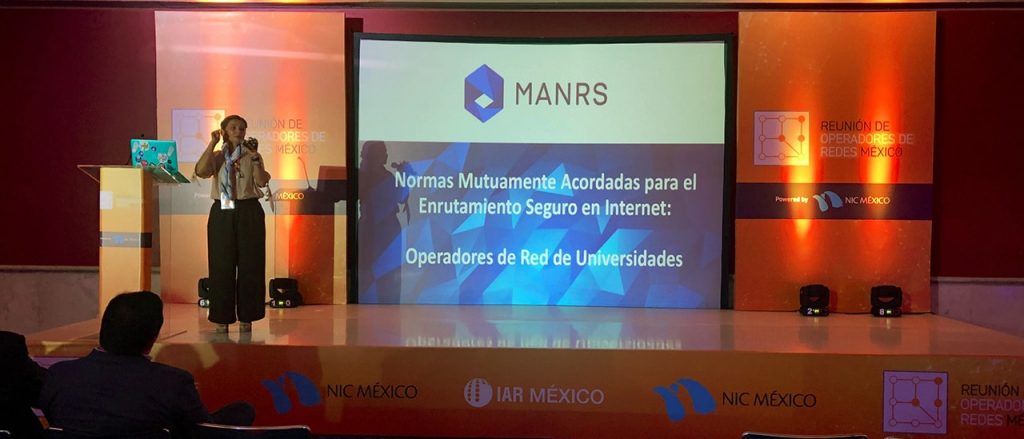How open standards help with defense in depth
If you ask an ordinary person about information security, they’ll probably talk to you about endpoints. Most people are aware of virus scanners for notebooks or PCs, and may have encountered some kind of mobile device management on a work-provided phone. These endpoint solutions naturally come to mind if someone mentions cyber security. However, this is backward from the way that infosec professionals think about the issue.
Someone who works in infosec will tell you that the endpoint should be the absolute last line of defense. If a virus scanner finds malware on your work notebook, the malware should have had to defeat a long list of other security precautions in order to get that far. This layered approach to security is known as defense in depth.
The term “defense in depth” originally was applied to military strategy. It described the practice of trying to slow an enemy down, disperse their attack, and cause casualties; rather than trying to stop their attack at a single, heavily fortified point. The enemy might breach the first layer of defenses, but would find additional layers beyond. While they struggled to advance, they could be surrounded and then counter-attacked.
Infosec in Depth
The information Continue reading
AT&T Trumpets SDN Milestone, Reiterates Virtualization Goal
The carrier's network virtualization journey reached a landmark this week with 75% of data running...
Citrix Fortifies SD-WAN With Palo Alto Firewalls
The partnership will allow customers to deploy security anywhere its needed across the WAN.
How Castle is Building Codeless Customer Account Protection


This is a guest post by Johanna Larsson, of Castle, who designed and built the Castle Cloudflare app and the supporting infrastructure.
Strong security should be easy.
Asking your consumers again and again to take responsibility for their security through robust passwords and other security measures doesn’t work. The responsibility of security needs to shift from end users to the companies who serve them.
Castle is leading the way for companies to better protect their online accounts with millions of consumers being protected every day. Uniquely, Castle extends threat prevention and protection for both pre and post login ensuring you can keep friction low but security high. With realtime responses and automated workflows for account recovery, overwhelmed security teams are given a hand. However, when you’re that busy, sometimes deploying new solutions takes more time than you have. Reducing time to deployment was a priority so Castle turned to Cloudflare Workers.
User security and friction
When security is no longer optional and threats are not black or white, security teams are left with trying to determine how to allow end-user access and transaction completions when there are hints of risk, or when not all of the information is available. Continue reading
Voices from the Pacific at APrIGF

The Asia Pacific Regional Internet Governance Forum (APrIGF) was held on 16-19 July 2019 at the recently constructed Far Eastern Federal University on Russky Island in Vladivostok, Russia. The theme of this year’s event was “Enabling a Safe, Secure and Universal Internet for All in Asia Pacific,” with 22 sessions covering six sub-themes: safer Internet, cybersecurity and regulation; access and universality; emerging technologies and society; human rights online; the evolving role of Internet governance (IG) and multistakeholder participation; and digital economy.
The Board of the Pacific Islands Chapter of the Internet Society (PICISOC) was represented by Anju Mangal from Fiji, James Ahwai from Samoa, and myself from the Cook Islands. James Ahwai, a newcomer to the IG scene, participated as a panellist in the opening plenary on The State of Play and Outlook for IG in the Asia Pacific and contributed a Pacific perspective. Anju Mangal, a former member of the IGF Multistakeholder Advisory Group, moderated the closing plenary on APrIGF Multistakeholder Participation in the Global IGF.
I led a workshop, which was a follow-up to a session on “e-Government for Empowering Pacific Citizens,” introduced at the APrIGF in Vanuatu last year. This year, PICISOC Board member, Cherie Lagakali, Continue reading
Infrastructure As Code 101
As the networking world continues to embrace automation and orchestration, some of the terms used to explain this new way of doing things remain a little fuzzy. In today’s episode we’re going to look specifically at Infrastructure as Code and by the end we hope to define what it is as well as what it is not, provide some relevant examples of it in action, and clear up as much confusion as possible about what it means to network engineers.
Outro Music:
Danger Storm Kevin MacLeod (incompetech.com)
Licensed under Creative Commons: By Attribution 3.0 License
http://creativecommons.org/licenses/by/3.0/
The post Infrastructure As Code 101 appeared first on Network Collective.
Heavy Networking 470: Why Does Networking Evolve So Slowly?
Packet Pushers host Greg Ferro found slides from a presentation he gave in 1999, and many of the points he raised are still relevant 20 years on. Why does networking take so long to change? The Packet Pushers and guests Jeremy Filliben, a CCDE trainer; and Emma Cardinal-Richards, a senior network architect; share their insights and opinions.
The post Heavy Networking 470: Why Does Networking Evolve So Slowly? appeared first on Packet Pushers.
Updated: Impact of IP Fragmentation on Tunnels and Encryption
The last bits of updated Never-Ending Story of IP Fragmentation were published a few days ago: IP fragmentation and tunnels and summary and related blog posts, RFCs and other articles.
Dell EMC Revs Up PowerMax Storage With NVMe-oF
The update includes SCM as a storage tier, dual port Intel Optane drives in support of NVMe-oF, as...
Kong’s Kuma Service Mesh Climbs the Kubernetes Wall
The service mesh is based on the Envoy service proxy and supports microservices running in...
Masergy Debuts AIOps, Your Virtual Network Assistant
The company said AIOps has the potential to significantly reduce downtime, enable faster fault...
Is Pentagon JEDI Program a $10B Cloud Security Fiasco?
If the Pentagon suffers a security breach, there’s a lot more to worry about than cost. That’s...
Verizon Bolsters VCE With Cisco Partnership, SD-WAN Backbone
Verizon unveiled major enhancements its Virtual Communications Express cloud calling service...
Network Operators in Mexico Strengthen Their Collaboration

Collaboration is a basic element for Internet development. Without it, connections among networks would be non-existent and the Internet wouldn’t have its global reach. Without it, the Internet wouldn’t exist as we know it. Fortunately, there are many groups that use collaboration and other elements of the Internet networking model.
On August 14, NIC Mexico convened the second meeting of network operators in the country. After a first successful meeting held in 2018, this year’s event exceeded the expectations of the organizers. Edmundo Cázarez, Internet Resource Manager at NIC Mexico, said the organization placed greater emphasis on promoting the meeting among network operators, which led to increased participation.
MEXNOG, as the group of operators is also known, has capitalized on the enthusiasm of the participants through their meetings, but also through a mailing list. In the style of other Internet development groups, the mailing list has served as a meeting point and as a space for exchanging information and best practices among participants.
Therefore, the next step for the group is to strengthen participation in this space, as Edmundo points out: “We want the mailing list to be the contact point of the group. It has been used to Continue reading
Heavy Networking 469: Actionable QoS Monitoring
QoS is hard to monitor. How do you know you’ve gotten it right? If it’s not working the way you want, how can you tell? To help us form a network design strategy to cope with these QoS gotchas is Peter Welcher, a network architect at NetCraftsmen.
The post Heavy Networking 469: Actionable QoS Monitoring appeared first on Packet Pushers.